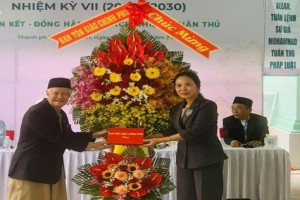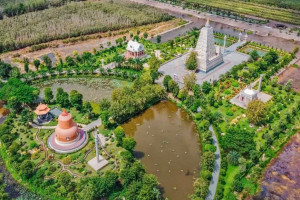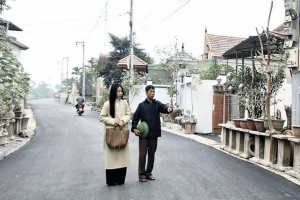
Lên đồng (Going into a trance) is a form of folk beliefs and very popular in Vietnam, Asia and many countries in the world. Some countries have recognized this form of folk beliefs as intangible cultural heritage, Korea has recognized Kut, Indonesia and Mongolia have recognized Shaman
According to the researchers at home and abroad, especially Dr Frank Proschan (France) Lên đồng is “ living museum of Vietnamese culture”.
Currently, in the system of religions and beliefs of Vietnam including Taoism and native religions, Mother Goddess religion has special elements. These elements have taken on specific characteristics of Vietnamese culture. These specific characteristics are presented in festivals and rituals. These specific characteristics help us to distinguish between Lên đồng and other beliefs and religions.

Lên đồng plays important role in the worship of Mother Goddesses. In this rite a medium may incarnate several Goddesses of Four Palaces( Four Palaces includes: Heaven, Earth, Forest River and Forest ). Goddesses are incarnated to say message, treat the disease, offer sacred gifts to audience. This ritual often has different characteristics and nuances.... The special characteristics are also presented in the worship of saints in the temples.
In each of session, many deities will be incarnated in a medium. A medium will dance, offer sacred gifts, say message in invocation songs. In main ritual there are 36 sessions. At present few rituals carry out 36 sessions.
Lên đồng is often held in the temples, palaces in many occasions a year. Example, Hầu xông đền ritual is held after New Year’s Eve); Hầu Thượng Nguyên ritual is held in the 1st lunar month, Hầu nhập Hạ rite is carried out in the 4th lunar month, Hầu tán hạ rite is in the 7th lunar month; Hầu tất niên rite is the 12th lunar month; Hạp ấn rite is in 25th of the 12th lunar month. But two main rites are the rite in the 3rd lunar month and the rite in the 8th lunar month. The anniversary of the death of Mother Goddess is held in the 3rd lunar month, and the anniversary of Father’s death is in the 8th lunar month
Before the main ritual, medium must worship wandering souls and Saints. Votive offerings consist of flowers, cakes and sweets, clothes, money…to worship wandering souls. During the main ritual, medium has assistants. They will help the medium do different costumes and burn incense sticks. These assistants often sit beside medium. Their clothes are white trousers and black tunics. The trained musicians and singers will perform invocation songs to induce a trance in the medium. Their Musical instruments include drums, flute, beat. Musicians—singers and instrumentalists—accompany the practitioner, and shift from one musical style to the next depending on which god is being incarnated After the ritual of incarnation, medium often covers her/his head with a red scarf, his/ her body swings until saint is incarnated him/her. At that time he/she tells assistants to offer saint, liquor, tobacco. When saint leaves, medium takes scarf off his/her head. In each main ritual there are 20 saints who will be incarnated medium
In Hầu bóng ritual (receiving incarnations of the deities) the deities who are incarnated medium help and support medium and their followers to have happy life because they were talented person and had high status in society when they were alive. Hầu đồng ritual is different from other incarnational rites because in Hầu đồng ritual there is ritual that requests deities to be incarnated medium. It is necessary for us to distinguish this ritual from other superstitious rituals. / .
Bao Anh




